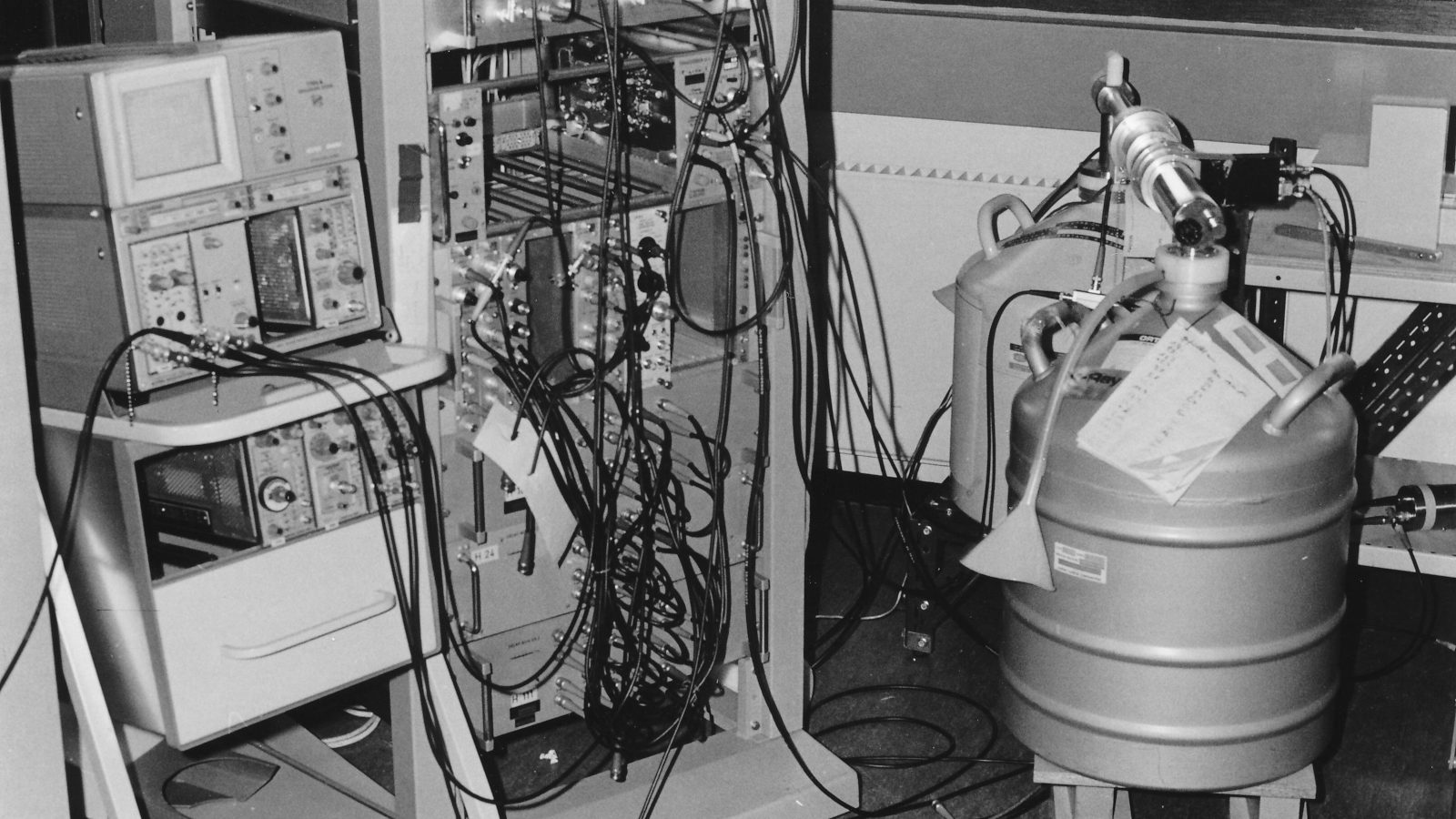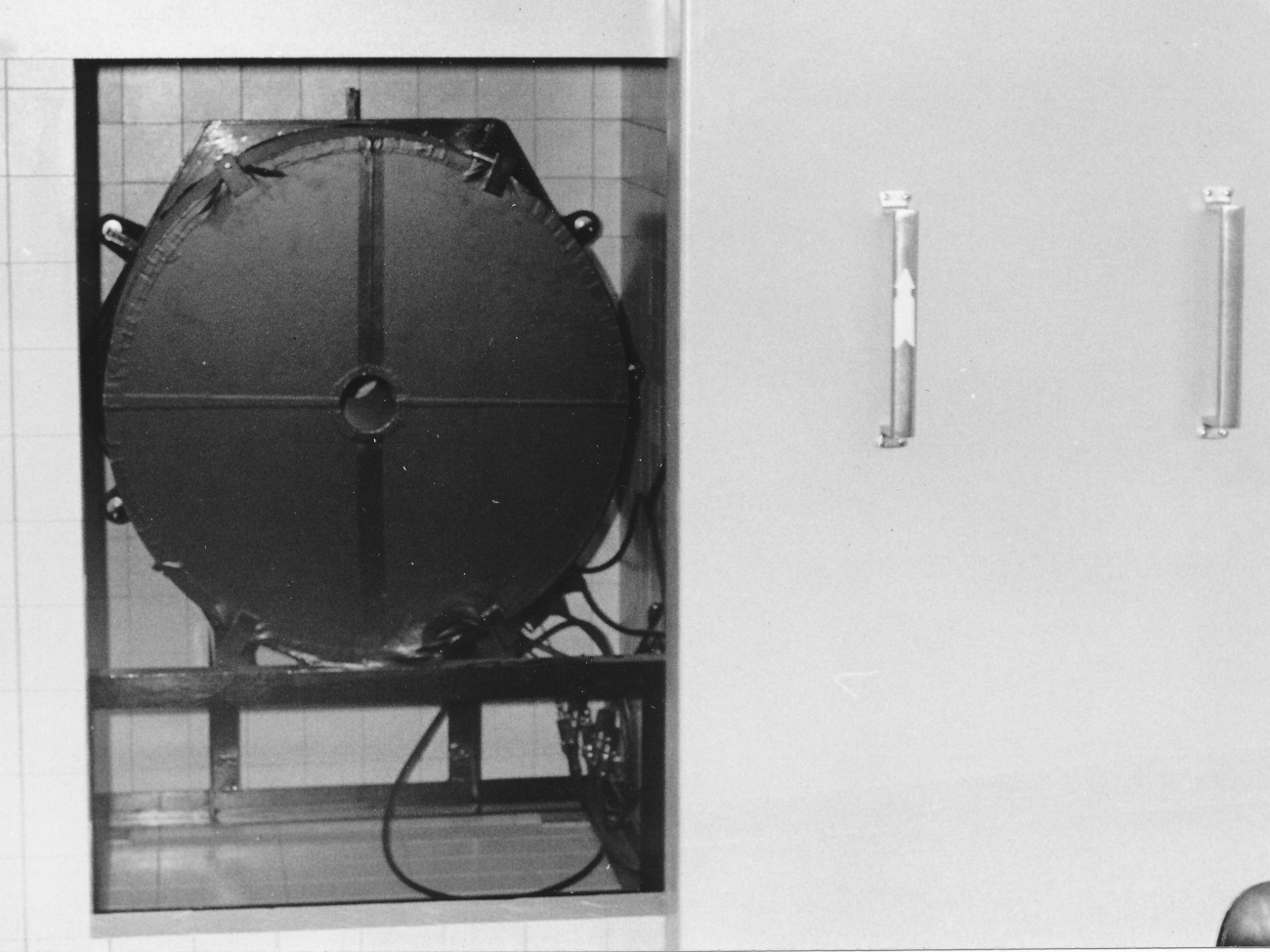
© Universitätsarchiv
Back Then: Contaminated – Radioactivity at the University of Bremen
Nuclear energy and the permanent disposal of radioactive waste – this was a topic of heated debate as early as the 1970s. On the university campus, too, where such contaminated residues were also found.
The nuclear accident in Fukushima and the subsequent final phase-out of nuclear power was not the beginning of discussions in this area: sociopolitical battles have been being fought in the field of energy supply since the 1970s. The environmental and anti-nuclear movement formed from the spirit of 1968. This also shaped the research interest in the physics degree course at the University of Bremen.
In addition, the University of Bremen was confronted with the problem of disposing of its own radioactively contaminated waste. For example, a Personnel Council meeting in March 1980 dealt with the planned conversion of an oil bunker in a transformer building in front of GW1. This bunker was now supposed to hold spent fuel rods from a neutron source. It was one of the two solvent bunkers on the university campus, where normally only chemical waste from the physics, biology or chemistry laboratories was stored. The site selection probably fell on the bunker at GW1 For the collection of radioactive waste because it was located a short distance from the Faculty of Physics, which was home to a number of measuring devices for detecting radioactive radiation.

© Universitätsarchiv
In the early 1970s, critical engagement with civilian use of nuclear energy was something that greatly concerned many professors and students in the physics degree course. In order to research the influence of radioactive emissions on the environment, they set up a laboratory with sensitive measuring instruments, the so-called “lead house” or “lead cellar.”
Fallout from Nuclear Weapons Tests Detected
Not only did the staff succeed in detecting the fallout from possible nuclear weapons tests, but more importantly, the series of measurements also revealed exposure from nuclear power plants and reprocessing facilities. However, this provisional arrangement caused increasing resentment among the university “radiation meters,” and they urged the Bremen Senate to provide long-term funding. In this dispute over funds and jobs, the “lead house” ceased operations at the end of 1985.
However, the Chernobyl nuclear accident, which occurred only a few months later, prompted the state of Bremen to enter into negotiations with the personnel again. Initially, the University of Bremen had issued work contracts to the ten employees from its own pocket. However, they were only slightly funded and expired on October 15, 1986. On October 22, the parties agreed to conclude new contracts for work and services, which guaranteed that work would resume by the end of the year.
State Radioactivity Measurements Laboratory Established in 1987
At the same time, the reorganization of the ‘lead house’ took place, so that on January 1, 1987, the State Radioactivity Measurements Laboratory was established and permanent workplaces and an adequate budget for measuring equipment were provided. Until today, the State Radioactivity Measurements Laboratory is subject to a special regulation, because the Bremen Senator for Environmental Protection and the Senator for Health and Sport have only transferred the tasks of such an institution to the local university. As a result, it is not a university institute; rather, the technical supervision rests with the respective senatorial authorities responsible.
The Chernobyl nuclear accident led to the establishment of the State Radioactivity Measurements Laboratory in 1987
The deployment of staff and their measurement programs are also carried out in consultation with the State of Bremen. On its behalf, the laboratory now monitors the contamination of water and soil by radionuclides. To do this, employees collect environmental samples such as forest mushrooms or sand from children’s sandpits. Until 1998, the State Radioactivity Measurements Laboratory released such low-level radioactive waste for decay in the former oil bunker next to GW1. Contrary to original plans, no radioactive decay products from internal university laboratories were stored here.
However, the university’s radiation protection officer was the central authority when it came to controlling the proper interim storage of the contaminated material. Although the State Radioactivity Measurements Laboratory disposed of its own radioactively contaminated environmental samples in the said oil bunker, the monitoring fell under the responsibility of the university, otherwise the An-Institut would have had to supervise itself.
The Nuclide Storage Facility Had to Make Way for a Lecture Hall
Nevertheless, in July 1998, the State Radioactivity Measurements Laboratory carried out the clearance of the nuclide storage in the transformer building in front of GW1. This was done by order of the radiation protection officer because a new lecture hall building was to be built on the site. After clearing the area, State Radioactivity Measurements Laboratory staff checked the oil bunker for possible radioactive contamination by monitoring the surface contamination. Fortunately, the transformer building itself was not radioactive, so demolition proceeded as planned.
Today, there is no sign of the repository. There is no need for a new one either, because the university immediately takes its radioactive waste to the Krümmel interim waste storage facility, which is located in Geesthacht.